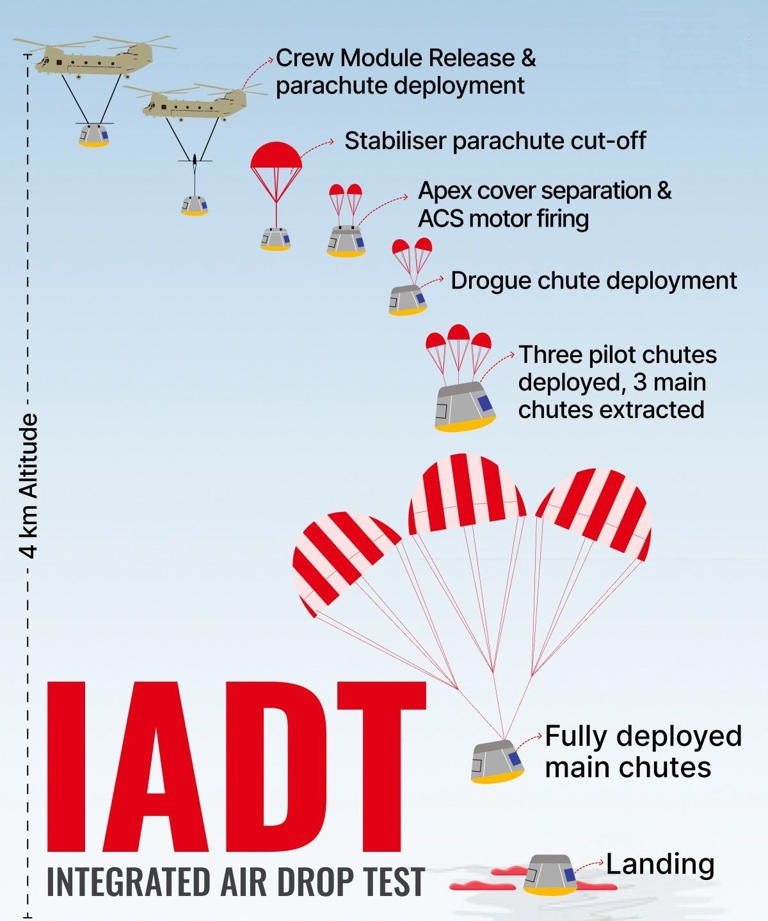Why in the News?
ISRO has successfully conducted IADT-1, a key milestone for India’s maiden human spaceflight mission, Gaganyaan.

About Air Drop Test (ADT-1):
- Test Setup: A dummy crew module weighing nearly 5 tonnes was dropped from an Indian Air Force Chinook helicopter at an altitude of about 3 km.
- Purpose: To test the parachute-based deceleration system that will slow the crew module during re-entry and ensure a safe splashdown.
- Parachute Sequence: Parachutes deployed in order — first drogue chutes, followed by three main parachutes — slowing the capsule to about 8 metres per second before landing.
- Outcome: The touchdown matched expectations, successfully validating the design for human re-entry and landing.
Roadmap for Gaganyaan:
- Objective: The ultimate goal is to send Indian astronauts to low-earth orbit on a human-rated LVM3 rocket.
- Validation Tests: A series of safety validation tests are planned before the crewed mission.
- Crew Escape System (CES): Already tested with TV-D1 in October 2023; TV-D2 will demonstrate a more complex abort scenario.
- First Uncrewed Mission (G1): Will carry the humanoid robot Vyommitra to simulate astronaut operations.
- Parallel Trials: Multiple air drop tests and subsystem validations, including parachute trials and life-support system checks, will continue.
- Key Technologies: Critical systems under development include the Environmental Control and Life Support System (ECLSS), the Integrated Vehicle Health Management System (IVHMS), and a strengthened human-rated LVM3 rocket.
- Timeline: The first human spaceflight (H1) is currently targeted for 2027, though delays are possible due to complexity in human-rating systems.
Long-term Goals:
- Foundation: Gaganyaan marks the beginning of India’s long-term human spaceflight programme.
- Space Station: The GoI has announced the Bharatiya Antariksh Station (BAS) to be established by 2035.
- Lunar Mission: India aims to achieve a crewed lunar landing by 2040.
- Critical Technologies: Capabilities such as in-orbit docking, demonstrated by the SpaDeX mission in 2025, will be essential for future missions.
| [UPSC 2025] Consider the following space missions:
I. Axiom-4 II. SpaDeX III. Gaganyaan How many of the space missions given above encourage and support microgravity research? Options: (a) Only one (b) Only two (c) All the three* (d) None |
Get an IAS/IPS ranker as your 1: 1 personal mentor for UPSC 2024

